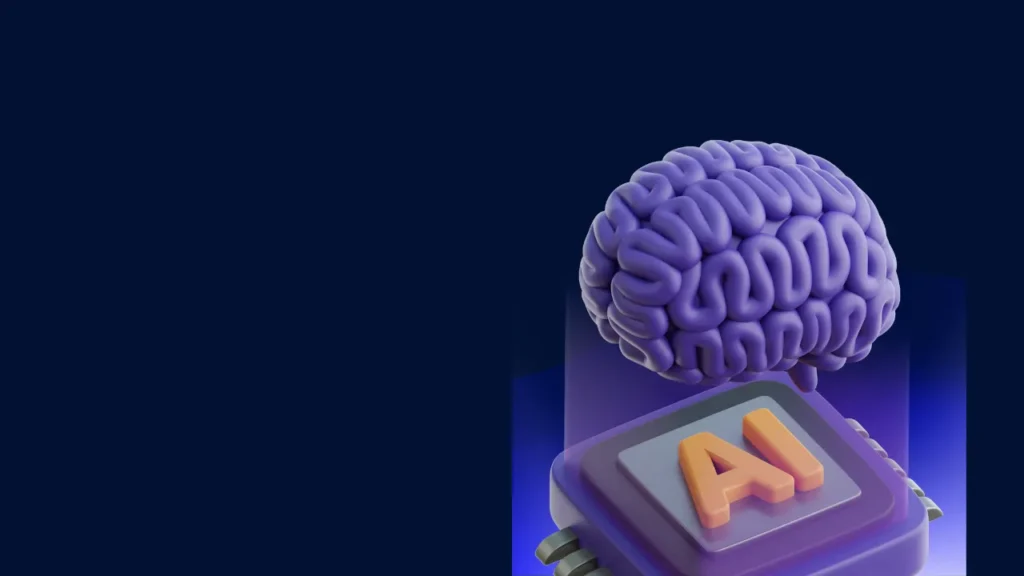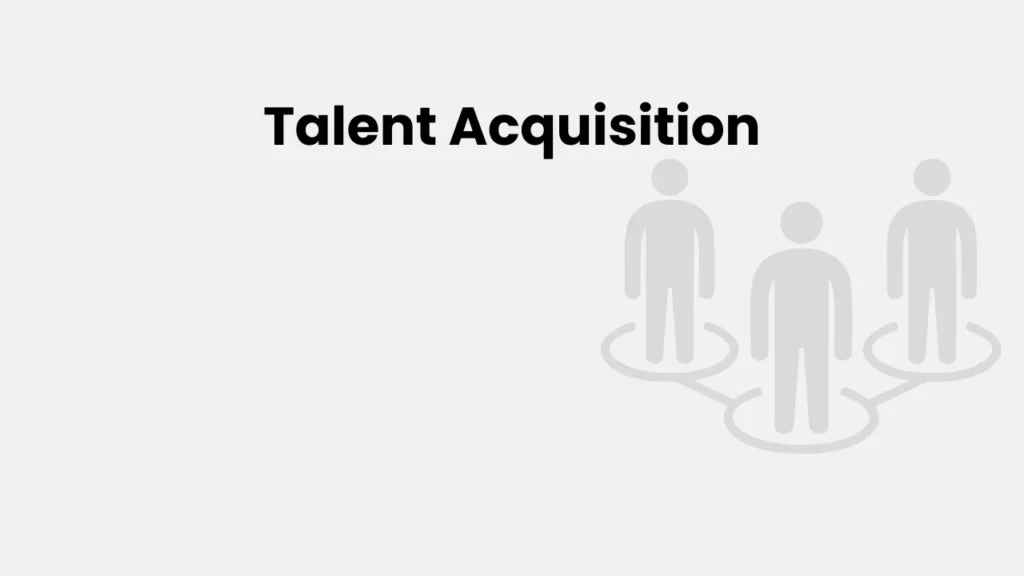Artificial intelligence has drawn interest from every industry due to its limitless potential to revolutionize the manner in which work is done, including hiring. A lot of talent acquisition executives still have misconceptions about AI, including the idea that robot recruiters are replacing human recruiters.
With information regarding practical applications across talent acquisition capabilities, this booklet aims to demystify AI technologies for recruitment. It offers guidance on how talent teams should begin preparing for the ethical and efficient use of AI in recruiting.
We can cut through the hyperbole and bring AI down to earth by stressing functionality over flashiness. We want to be clear that AI is a set of tools to help your teams become proficient at both routine and key jobs, not a substitute for the talent acquisition strategy you have already established.
To avoid AI detection, use Undetectable AI. It can do it in a single click.
What is Artificial Intelligence?

Professor John McCarthy of Stanford University invented the term artificial intelligence, defining it as the science and engineering of creating intelligent machines, including intelligent computer programs. Artificial Intelligence is technology that can carry out tasks that would require human intelligence.
AI might learn how to complete complicated tasks without having to be explicitly trained to do so through the use of data and algorithms. It also encompasses the subfields of robotic process automation, voice and natural language processing, and machine learning.
Because of advancements in machine learning algorithms, the amount of digital data, and gains in processing power, artificial intelligence capabilities have grown during the past ten years.
As a consequence, in a variety of tasks including language processing, prediction modeling, object recognition, and other areas, AI systems might currently compete with or even surpass human performance. In particular, the disruption brought about by generative AI arrived as a freight train.
Artificial Intelligence has transformed from a theoretical notion to a real force that is affecting businesses and jobs in a matter of months. AI was once pricey and exclusive, but because of generative AI tools such as ChatGPT, Google Gemini, and Microsoft Copilot, it is now a common technology available to everyone.
State of AI For Talent Acquisition

Recruitment resources and finances are still tight, and top talent is becoming competitive and hard to acquire. Talent acquisition teams have to operate intelligently than ever before, and automation and artificial intelligence could offer a chance for businesses to improve their hiring practices.
A staggering 81% of HR directors, according to Gartner, have looked at or used AI solutions to increase process efficiency in their companies. HR directors want to apply generative AI to boost learning and development initiatives, improve employee experience by 52%, and increase HR process efficiency by 63%.
Furthermore, according to 76% of HR directors, their company could fall behind its competitors if artificial intelligence solutions are not implemented in the next year or two.
Advantages and Disadvantages of AI For Talent Acquisition

While AI has immense promise, it also comes with some serious concerns which talent acquisition and HR directors should actively address. Due to its lack of regulation, artificial intelligence has drawn criticism for its detrimental effects on security, privacy, prejudice, and decisions transparency.
But, if you use caution and investigation, you could set up reasonable policies at your company that enable this technology to improve your talent acquisition efforts while upholding human values.
Benefits of Using AI For Talent Acquisition

When applied properly, AI might create the human component of your talent program productive and efficient. Numerous advantages arise from implementing AI at different phases of the hiring process, such as:
Cost Reduction
In certain situations, AI can lower the cost per application. Recruiters could liberate up time to engage with hiring managers and candidates by delegating low-impact, repetitive duties to AI.
Reducing vacancy rates and expenses becomes possible by the effective use of resources brought possible by the optimization of talent acquisition teams.
Improved Diversity and Inclusion
With the correct data to learn from, AI minimizes unconscious bias from hiring by focusing judgments on data rather than gut instinct. AI-assisted recruiting improves diversity and fosters a fair hiring process by neutrally evaluating candidates’ skills.
Improved Matching
Sophisticated AI systems bring to light potential candidates who could have gone unnoticed. AI systems promise improved candidate-job fit by evaluating candidates’ qualifications, experience, and other characteristics and matching them to available positions.
This raises the caliber of hires and opens up talent pools that recruiters would have overlooked.
Improved Candidate Experience
A flawless, round-the-clock applicant experience is produced by technologies such as self-scheduling and AI chatbots. They shorten the time it takes to hire new employees by managing frequently asked questions and scheduling interviews.
The hiring process is streamlined and expedited since candidates receive prompt responses rather than having to wait for recruiters to log on.
Efficiency
AI-powered solutions can handle labor-intensive jobs such as initial screening and communication, providing recruiters the capacity to reach a larger number of candidates at once.
AI tools assist recruiters in concentrating their efforts on the promising individuals, even assisting in the identification of passive applicants. Reaching a larger pool of competent prospects exposes recruiters to a higher quality of applicant pool.
Disadvantages of Using AI For Talent Acquisition

Talent leaders need to carefully address widespread concerns about AI transparency, output interpretation, data protection, and ethics, even while there are benefits. Organizations need to exercise extra caution when using AI to help human decisions as they prepare to reap the benefits of its efficiency.
Some frequent obstacles arise when implementing and scaling AI effectively across talent acquisition functions, such as:
Workflow Integration
Integrating AI recruiting tools into current systems and procedures is necessary for their implementation. Too often, businesses implement AI without taking into account how it might impact other activities. Organizations should instead assess how AI technologies can integrate with the infrastructure they now have.
For instance, to import candidates that have been AI-screened, your application tracking system might require API connections. AI could become a seamless addition to talent acquisition rather than an afterthought with proper integration strategy.
Data Privacy Issues
Concerns around consent, data privacy, and ethical use could stem from gathering and evaluating the vast candidate data needed by AI systems. Regulations such as GDPR and CCPA that apply to your locations should be complied with by any talent data into the AI systems.
Where using AI recruitment technologies, organizations should set up a framework to be transparent about the data being collected, obtain consent where necessary, and secure sensitive applicant data with encryption and access controls.
To be certain candidate data is not being scraped for other purposes, your data security team should review any AI usage.
Over Automation
Overly relying on AI can be risky if hiring practices become too automated and do not include human judgment as a safeguard. An applicant might feel depersonalized if they receive too much automated correspondence. AI should never take the place of human interaction. It should expand human potential.
Businesses that use AI for hiring need to be certain applicable laws are followed. For instance, automated decisions are subject to stringent regulations under GDPR, and people have the right to human intervention and the ability to challenge automated judgments that impact them.
Lack of Accuracy
GAI is prone to hallucinating creating sources, statistics, and even case law. There are no checks in place to confirm the content that is created or to examine if the result is accurate or suitable.
Employers who use ChatGPT and similar applications for recruiting expose themselves to hazards. When developing messages and content with GAI tools, recruiters need to know how necessary it is to maintain a human touch and use discretion.
Lack of Transparency
When applicants and staff members are unaware of how artificial intelligence is employed in the recruiting process and how it generates particular outputs or recommendations, organizations could face pushback from these groups.
To help recruiters, hiring managers, and applicants understand the rationale behind AI-generated outcomes and their role in the hiring process, you can build trust through training and communication. When describing the elements impacting decisions, use language that is easy to comprehend and concise.
You should also establish systems to collect feedback and report any potential problems. Transparency strengthens company values, builds a solid standing in the sector, and encourages the ethical application of AI in hiring.
Disproportionate Impact
Some demographic groups are vulnerable to the negative effects of AI in hiring. For example, an AI screening system could automatically exclude qualified minority candidates if it places a high emphasis on racialized test scores.
Similarly, lower income groups might not have access to the digital tools and internet connectivity necessary for AI screening. Candidates from underprivileged backgrounds could be immediately disqualified due to this digital divide.
AI recruiting tools run the risk of exacerbating inequality in the real world unless proactive steps are taken to solve these structural problems. When using AI, organizations should take into account the disproportionate impact on diversity and equity.
Biased Algorithms
Even though AI can lessen bias, if it is taught on incomplete or biased data sets, it could inadvertently contribute to inequity. The application of AI has to comply with the rules that forbid discrimination in the hiring process in numerous countries. Executives should track data sources and exercise caution when evaluating AI advice.
Nevertheless, bias in AI can be addressed far readily than bias in people. Whether or not AI is used, encouraging inclusive, fair hiring requires proactive monitoring and mitigation of potential areas of bias.
The secret to properly managing the dangers is to proactively address these worries through governance, supervision, and ongoing development of AI systems and procedures. Artificial intelligence in hiring is allowed but subject to regulation. Systems need to be open, equitable, and responsible.
They cannot arrive at employment decisions in the end. For AI to be used ethically in recruiting, compliance with anti-discrimination and data protection legislation is necessary.
It is necessary to conduct routine audits to check for unintentional bias and to retain human oversight in case automated recommendations need to be reviewed, overridden, or contested.
AI For Talent Acquisition Use Cases

Organizations are using smart technology to gain an advantage in attracting and engaging applicants as the recruiting market becomes competitive. Artificial intelligence solutions, such as chatbots, video interviews, and skills assessments, are improving hiring funnel insights and optimizing workflows.
These are a few instances that highlight artificial intelligence’s enormous potential to enhance the recruiting process and improve results.
How to Use AI for Sourcing and Attracting Candidates?

AI augmentation is prepared for use in locating, contacting, and interacting with potential applicants. Creating an effective pipeline of talent often entails labor-intensive, repetitive tasks that might take attention away from additional work. Here are a few ways artificial intelligence can help you fill your hiring funnel.
Predictive Analytics
Based on a candidate’s profile, machine learning algorithms can also offer prescriptive and predictive recruiting recommendations. Artificial Intelligence has the ability to evaluate sincere interest, candidate motivations, acceptance rate, and even anticipated tenure.
This provides recruiters additional knowledge to prepare candidates for interviews and enables them to tailor outreach messaging to each candidate’s top priorities. AI models learn what messages and channels persuade candidates with different profiles and career paths as engagement data is collected over time.
As a result, there is a positive feedback loop created that increases efficiency with each hiring cycle.
Skills Matching
AI has the ability to search through a vast number of online profiles, replacing the manual procedure, and locate people that possess the talents you are seeking for.
For instance, PeopleScout’s talent acquisition suite Affinix’s AI-powered Affinix CRM solution looks through millions of online profiles to identify passive applicants who possess the abilities and competences needed for the position.
By adding the average tenure of each job listed on a candidate’s profile to the average tenure of other candidates applying for the same position, the AI determines if a candidate seems to be receptive to new opportunities.
It can take hours of focused effort to manually identify passive candidates who have comparable titles but might not be actively looking for work. AI has the potential to speed up the hiring process and eliminate manual labor. Plus, it broadens your pool of candidates by focusing on talents rather than experience.
Writing Job Descriptions
ChatGPT and other GAI chatbots, such as Bing Chat, Gemini, and others, quickly spread throughout the workplace after their launch in late 2022. These tools simulate human conversation and can be used for anything from sending emails to creating content and conducting market research.
They can be used for writing job descriptions in addition. The GAI chatbot can create an initial draft of a job description in a matter of seconds by providing them with pertinent questions that outline the duties and necessary competencies, along with employer brand components such as tone of voice.
This wording can then be modified by the recruiter and hiring manager for the final posting. AI can be used to analyze sentiment and identify biased language in job descriptions that now exist.
Numerous AI-powered internet tools can identify biased terminology, such as the stereotypically masculine terms ambitious or expert, so you can be certain you are not excluding any part of your target audience.
Building Candidate Personas
AI can identify trends and common traits by mining past hiring data for a particular function in addition to the profiles of current employees. These trends, along with qualitative information acquired during interviews, might assist you in creating a persona profile of the best applicant for the position.
A persona is an imaginary profile that symbolizes the various kinds of applicants who could succeed in a particular position. Personas highlight personal traits, actions, passions, objectives, inspirations, and difficulties.
By implementing these, you can bring your sourcing and recruitment strategies into harmony. Along with precise advice on how to identify people who suit the profile, your persona profiles should include messaging that are targeted and are bound to resonate.
How to Use AI to Support Interviews and Screen Candidates?

Manually vetting candidates based just on CVs and resumes can be a biased and inaccurate process. By using AI as a second pair of eyes, you could be certain that qualified applicants are not passed over. Here are a few process components that AI can improve.
Skills Assessments
AI is also used in pre-employment evaluations. In order to verify that eligible candidates are moving forward in the hiring process, new computer platforms have the capacity to assess and quantify applicants for personality traits, cognitive ability, and skill mastery.
To verify compliance with applicable regulations regarding automated decisions, a person should check each result. By using AI to assess talents, hiring managers and recruiters may concentrate on the top applicants who have the best chance of succeeding in the position, hence enhancing equity.
Initial Sift
In just a few seconds, natural language processing systems can scan through thousands of CVs and resumes to identify patterns, context, and content in the talent pool. AI systems can be programmed to identify certain knowledge, abilities, and experiences needed for available positions.
After that, they can automatically score and rank applications in relation to your ideal candidate profile. Seek solutions with a dashboard that identifies the cream of the crop applicants who show the best congruence. This helps you promptly connect with or forward the prospective people to hiring managers.
Real Time Screening
Intelligent chatbots use natural language processing to create a conversational experience for candidates, similar to text and SMS screening systems. These text-based, mobile-friendly interview tools use pre-written questions to automatically assess candidates based on their qualifications and areas of interest.
The chatbot can ascertain each candidate’s next step based on their responses.
How to Engage Candidates with AI?

AI-powered solutions for applicant engagement enable you to offer smooth, customized experiences at scale, increasing candidate happiness and hiring speed while freeing up recruiters to concentrate on developing relationships, which is their area of considerable expertise.
Self-Scheduling Tools
The laborious back-and-forth involved in organizing site visits, interviews, assessments, and other activities can be replaced by calendar management bots. Just convenient time slots are displayed to candidates through integration with hiring managers’ calendars.
Reminders and confirmations are sent to prospects automatically, saving recruiters time and improving the chance that candidates can show up for their interviews.
Chatbots
Chatbots use natural language processing to handle a variety of repeated, high-volume questions from applicants. Chatbots offer reliable, consistent answers to often asked inquiries regarding the organization, the job role, the interview process, and the application status around-the-clock.
This is useful in situations where recruiters are not available. This increases candidate satisfaction and frees up recruiters’ time for higher-value tasks. In order to foster candidates, intelligent messaging platforms can launch large-scale one-way conversations.
AI writing helpers create intelligent, individualized texts on the fly using data about the prospect, job, process stage, and other relevant factors. This degree of customization increases employment brand affinity, accelerates applicant progression through the funnel, and enhances candidate engagement.
Customized Candidate Communications
Organizations have been automating conversations with candidates during the hiring process by utilizing candidate relationship management technology for a number of years.
To keep candidates informed about the next stages and engaged with content that is relevant to them, automated email drip campaigns provide the correct information at the right time in the journey.
You can create individualized interaction at scale using this. Recruiters are now leveraging ChatGPT and other GAI platforms to assist them in creating one-time emails for candidates.
Recruiters can obtain an initial draft via ChatGPT through the use of the relevant prompts, which they can examine and modify to suit individual prospects. Your talent acquisition team could be able to save hours of effort per week by doing this.
How to Use AI For Talent Acquisition?

When stepping into AI, you should prioritize discovery over extensive integrations. An RPO (recruitment process outsourcing) partner can serve as a strategic advisor on your AI recruiting journey. AI in recruitment is a rapidly evolving field that is coming under increased regulatory scrutiny.
RPOs can offer advice on the best solutions for your needs, integration requirements, data needs, ethical usage, and workflow design. They have expertise deploying recruitment tech, such as AI software, for clients.
By employing RPO experience, firms can efficiently implement AI-enhanced hiring with minimal interruption and a quicker return on investment. When it comes to AI in recruiting, find a partner who is progressing at your own pace.
They could assist you in pinpointing opportunities for immediate gains and in extending this achievement via trial and error. An RPO partner can assist you in using AI for hiring in the following ways:
- With continuous support and training, RPOs can facilitate the adoption of automated processes and facilitate their transfer. They can provide training curricula to improve the ethical and effective usage of AI tools by your internal recruiters in compliance with your company’s AI standards.
- Recruitment workflows can be redesigned by RPOs to use AI tools. For instance, PeopleScout’s Talent Diagnostic looks at your talent lifecycle, assesses your employer brand and attraction tactics, and looks for opportunities to use technology to improve the candidate experience.
- RPOs have the ability to fine-tune procedures and continuously monitor and assess AI outcomes. In time, these insights can help you in achieving better results.
- In cooperation with your internal legal team, RPOs remain abreast of rules pertaining to AI in recruiting and can offer advice on its ethical and legal applications.
Conclusion: AI For Talent Acquisition
AI has shown to have enormous potential to change the hiring process. It is not just hype anymore, as this article explains; instead, it is causing a genuine difference in sourcing, screening, interviews, and applicant engagement.
The outcomes of AI depend on elements such as data integrity, openness, interaction with current systems and procedures, and governance that promise responsible use. AI solutions are designed to support human intervention in hiring, not to stand in its place.
In terms of relationship development, mentoring, and negotiating, recruiters are necessary and AI cannot replace what lends them inherently human. In the future, the usage of AI recruiting technology to match individuals with meaningful work might just grow.
Developing a recruiting culture that is values-based, inclusive, and ethical is still necessary for luring in candidates that share your company’s goals. The hiring process appears to have a bright future with human stewardship over AI.
FAQs: AI For Talent Acquisition
What is AI for Talent Acquisition?
AI for Talent Acquisition refers to the integration of artificial intelligence technologies into the talent acquisition process to enhance efficiency, accuracy, and effectiveness in recruiting.
This can include various AI solutions such as AI recruitment tools, AI screening techniques, and chatbots that assist recruiters in sourcing, screening, and engaging with potential candidates. By leveraging AI in recruitment, organizations can streamline their recruitment process and improve the candidate experience.
How does AI improve the recruitment process?
AI improves the recruitment process by automating repetitive tasks, enhancing decision capabilities, and allowing recruiters to focus on strategic aspects of hiring.
For instance, AI systems can quickly analyze large volumes of resumes to identify the best candidates based on predefined criteria, thereby saving time and reducing the chances of human bias. AI algorithms can help in predicting candidate success by analyzing past hiring data and metrics.
What are some common AI tools used in talent acquisition?
Common AI tools used in talent acquisition include AI recruiting software, applicant tracking systems with AI capabilities, and chatbots for initial candidate interaction. These tools can assist in candidate sourcing, automatically screening resumes, and scheduling interviews, thereby enhancing the efficiency of the hiring process.
Numerous organizations are now using AI technology to improve their recruiting process.
What role do chatbots play in AI in talent acquisition?
Chatbots play a significant role in AI in talent acquisition by providing real-time assistance to candidates and collecting valuable information during the early stages of the recruitment process.
They can answer frequently asked questions, guide candidates through application processes, and even conduct preliminary screenings. This not just enhances the candidate experience but also allows recruiters to focus on complex tasks.


